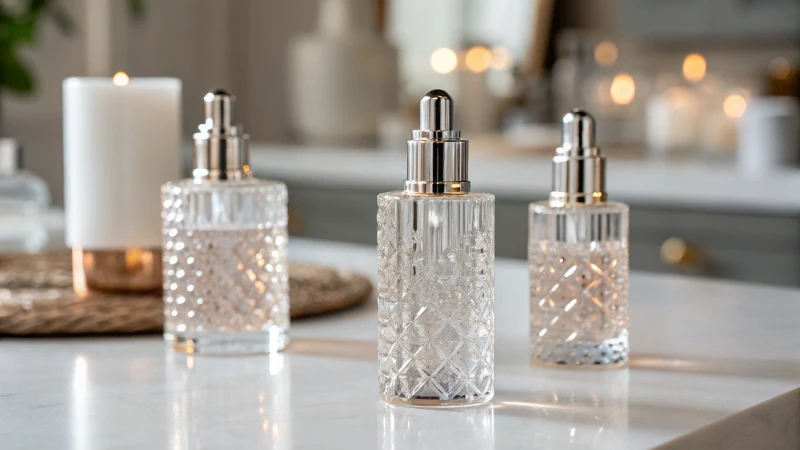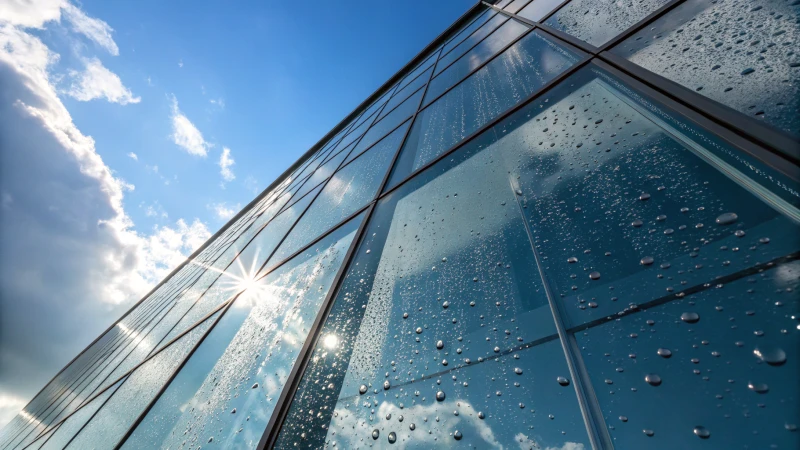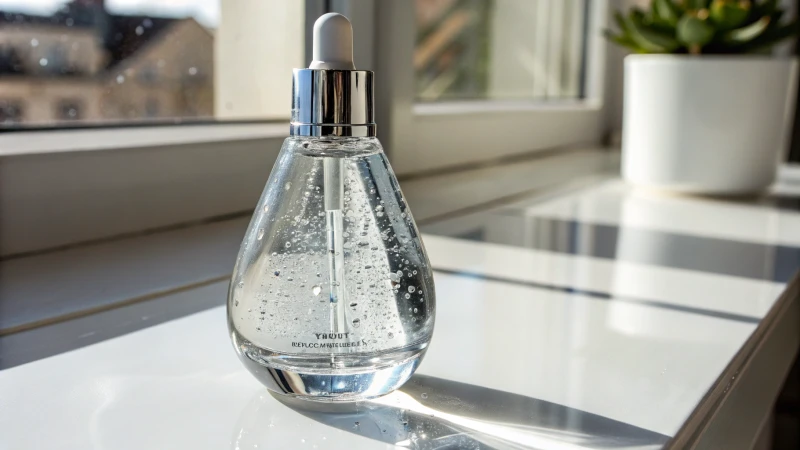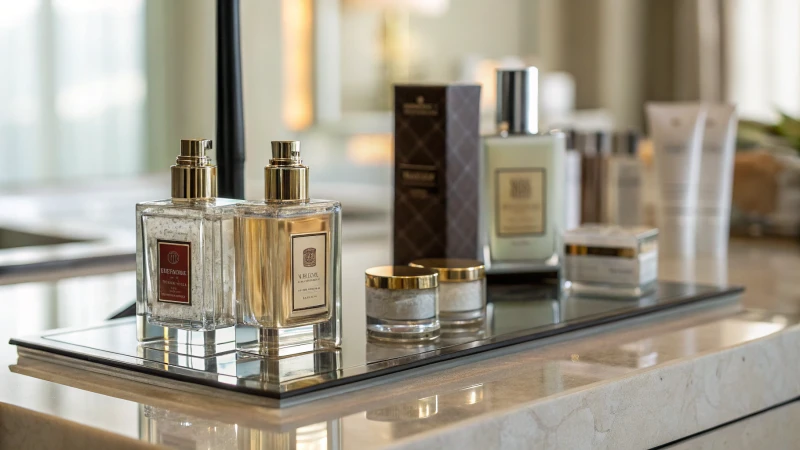
Ever wondered if your cosmetic packaging could clean itself? It’s a wild concept, but self-cleaning glass might just be the future.
Self-cleaning glass surfaces use special coatings to repel dirt and water, potentially reducing maintenance needs. But when it comes to drop bottles, issues like coating durability, chemical interactions, and high costs challenge their practicality, making it a less feasible option for everyday use.
Imagine the allure of a bottle that stays pristine with minimal effort—it’s like a skincare dream come true! However, reality check: implementing self-cleaning glass in drop bottles is a different story. The concept sounds fabulous for luxury packaging, but when I looked into the practical side, there were hurdles like durability and cost that made me pause. Dive deeper into these challenges to see if self-cleaning glass fits your packaging vision.
Self-cleaning glass surfaces repel dirt and water.Wahr
These surfaces use specialized coatings to repel dirt and water.
Self-cleaning glass is cost-effective for drop bottles.Falsch
High costs and durability challenges make it impractical for drop bottles.
How Does Self-Cleaning Glass Stay Clean?
Have you ever been amazed at how some glass surfaces seem to stay clean effortlessly, even in the rain?
Self-cleaning glass uses advanced coatings with hydrophobic or photocatalytic properties to maintain a spotless appearance. These coatings either repel water or harness sunlight to break down organic dirt, simplifying cleaning.

Understanding Self-Cleaning Glass Technology
As someone who once spent countless weekends battling streaks and smudges on my windows, discovering self-cleaning glass felt like uncovering a secret weapon. This technology is designed to significantly cut down on manual cleaning efforts, making life just a tad bit easier. There are two main types of coatings that give self-cleaning glass its magical properties: hydrophobic and photocatalytic.
Hydrophobic Coatings
Imagine the way rain beads up and rolls off a duck’s back—that’s essentially what hydrophobic coatings do. They repel water, causing droplets to form and slide away, taking dirt along for the ride. I once watched in awe as rain cleaned my windows for me, and it felt like Mother Nature was lending a helping hand. These coatings often use fluorinated compounds1 to create this water-repellent effect.
| Advantages | Disadvantages |
|---|---|
| Easy maintenance | Limited to specific climates |
| Clear visibility | May lose effectiveness over time |
Photocatalytic Coatings
Photocatalytic coatings are like having a little science experiment on your windowsill. They use sunlight to break down organic grime, turning it into particles that easily wash away with rainwater. For a science enthusiast like myself, it’s fascinating to see how something as simple as sunlight can transform my cleaning routine. Titanium dioxide is often the go-to for these coatings due to its efficiency, as seen in common applications2.
- Example: Titanium dioxide is a common choice3 due to its efficiency in decomposing organic matter.
Applications in Architecture
When I first saw self-cleaning glass used in towering skyscrapers, it was like witnessing a leap into the future. These buildings benefit immensely from reduced maintenance costs and uninterrupted views. Imagine not having to worry about cleaning those impossible-to-reach windows! A case study on modern skyscrapers4 shows how they’ve embraced this technology.
Challenges and Considerations
However, like many good things in life, self-cleaning glass isn’t without its quirks:
- Durability Issues: Over time, environmental wear can diminish the effectiveness of these coatings.
- Cost Implications: The upfront cost can be steep compared to regular glass.
Understanding these aspects is vital for anyone considering investing in self-cleaning glass technology. With continual advancements, such as those in future innovations5, this technology might soon become more accessible, offering enhanced functionality and broader application possibilities.
Hydrophobic coatings repel water on glass surfaces.Wahr
Hydrophobic coatings cause water to form droplets that roll off, cleaning dirt.
Photocatalytic coatings require no sunlight to function.Falsch
Photocatalytic coatings need sunlight to break down organic materials.
What Are the Technical Challenges of Using Self-Cleaning Glass in Drop Bottles?
Have you ever been fascinated by how self-cleaning glass could revolutionize drop bottles, yet wondered about the bumps along the road?
Using self-cleaning glass in drop bottles presents challenges like maintaining coating durability and ensuring chemical compatibility. These issues can affect the longevity and safety of the packaging, necessitating thorough research and strategic planning for successful integration.

Coating Durability: A Persistent Challenge
When I first stumbled upon the concept of self-cleaning glass, I was instantly intrigued by its potential. The idea of a glass that cleans itself sounded like a dream come true, especially for something as intricate as drop bottles. However, the reality is that keeping those coatings intact over time is no easy feat.
Imagine using a special coating like titanium dioxide to keep those bottles sparkling clean. But then, think about how these coatings handle everyday wear and tear. Ever had a favorite mug that lost its luster after too many dishwasher cycles? Self-cleaning coatings6 face similar struggles with peeling or cracking, especially under fluctuating temperatures.
Key Issues:
- Thermal Expansion: It’s like putting on a shirt that fits perfectly in the morning but stretches awkwardly by evening. Different materials expand at different rates, causing stress that can damage the coating.
- Friction and Pressure: Picture the bumpiness of a long car ride. During transport, those bottles experience friction and pressure, which can wear down even the toughest coatings.
For suppliers, this degradation means hefty repair bills and logistical headaches, especially when moving products in bulk.
Chemical Compatibility: Navigating the Risks
Then there’s the chemical compatibility conundrum. As someone who has mixed up their fair share of DIY skincare concoctions, I know that not all ingredients play nice together. Similarly, self-cleaning coatings have to be buddies with whatever’s inside those drop bottles.
| Potential Reactions | Effects |
|---|---|
| Interaction with oils | Changes in liquid properties |
| Permeability issues | Chemical leaching risks |
Implications: Suppliers need to test extensively to ensure nothing goes awry. Imagine if your luxurious essential oil blend started reacting with the bottle itself—disastrous!
Cost Considerations: Balancing Quality and Expenses
While I adore innovations, they often come with a hefty price tag. The technology behind self-cleaning glass is no exception. With costs soaring up to 50% due to fancy coatings like titanium dioxide, it’s clear that this is a playground mainly for premium brands.
Market Positioning: In the world of everyday skincare, where every penny counts, self-cleaning features7 are more of a luxury than a necessity.
Future Directions: Innovations and Alternatives
Looking ahead, I’m excited about how sustainability trends might lead us to breakthroughs in this area. Imagine nanocoatings that are not only more durable but also kinder on the wallet.
Potential Breakthroughs:
- Nanotechnology: Offering promising solutions in wear resistance and cost efficiency.
- Smart Coatings: Imagine bottles that adapt to environmental changes—now that’s enhancing user experience!
Staying updated on these advancements could be crucial. Who knows? The next time you pick up a drop bottle, it might just be a marvel of innovation8 bridging functionality and cost-effectiveness.
By understanding these challenges, I believe industry players can make smarter decisions that align both with market demands and technological possibilities.
Coating durability affects self-cleaning glass longevity.Wahr
Durability issues, like peeling or cracking, shorten the glass lifespan.
Nanotechnology increases self-cleaning glass costs by 50%.Falsch
While titanium dioxide coatings are costly, nanotechnology aims to reduce costs.
Is Investing in Self-Cleaning Glass for Cosmetic Packaging Worth It?
Ever pondered whether self-cleaning glass for cosmetic packaging is worth the splurge? As someone who’s navigated the whirlwind of cosmetic packaging, I’ve often asked myself this very question.
The cost of self-cleaning glass in cosmetic packaging can be justifiable for luxury brands aiming for a standout aesthetic and low maintenance. However, its expense and potential chemical interactions may not be ideal for mass-market products.

Exploring the Benefits and Limitations of Self-Cleaning Glass
Thinking back to my early days in the cosmetic packaging world, I remember the excitement around innovations like self-cleaning glass. The idea of a packaging that looks as pristine as the day it was made without constant upkeep was nothing short of magical.
Benefits of Self-Cleaning Glass:
-
Enhanced Aesthetic Appeal: Imagine a high-end cosmetic brand that prides itself on looking impeccable. Self-cleaning glass ensures that products maintain their showroom shine, which is crucial for premium brands.
-
Reduced Maintenance: Not having to worry about cleaning means more time focusing on what really matters—like perfecting the next big skincare sensation.
But every rose has its thorn, and I’ve learned that these benefits come with some hefty drawbacks:
Limitations and Challenges:
-
High Production Costs: I’ve seen firsthand how self-cleaning coatings9 can hike up the cost of packaging by a significant margin, sometimes up to 50%. It’s a tough pill to swallow when margins are tight.
-
Chemical Compatibility Concerns: Some of my clients have been caught off guard by unexpected reactions between coatings and product formulations, which can compromise the product itself.
-
Durability Issues: Over time, I’ve noticed that the durability of these coatings can falter, especially under constant handling or in challenging environments.
Evaluating the Market Demand for Self-Cleaning Glass
When weighing whether to invest in self-cleaning glass, I always consider the product’s market:
-
Premium vs. Mass-Market Products:
- Premium Brands: For these, the investment can enhance branding and offer a unique consumer experience.
- Mass-Market Items: These often don’t need such features, making it hard to justify the cost.
-
Consumer Perception:
- If the added value isn’t clearly communicated, consumers may not see the benefit, making it a tough sell.
Potential Innovations in Self-Cleaning Glass
| Technology | Potential Impact |
|---|---|
| Nanotechnology | More durable, cost-effective coatings could emerge. |
| Smart Coatings | May offer adaptive functionalities like humidity responsiveness. |
Future Prospects: With advancements in technology10, I believe self-cleaning glass will become more prevalent in luxury sectors. This understanding helps me guide businesses toward informed decisions when considering self-cleaning glass for their cosmetic packaging11.
Self-cleaning glass reduces maintenance costs by 50%.Falsch
It reduces cleaning efforts but doesn't cut costs by half.
Self-cleaning glass is more suitable for premium brands.Wahr
Premium brands value aesthetics and can justify higher costs.
What innovations could revolutionize self-cleaning glass?
Have you ever wished your windows could clean themselves without lifting a finger?
Future innovations in self-cleaning glass might feature cutting-edge nanocoatings, adaptive smart materials, and sustainable technologies. These advancements could improve durability, adjust to environmental conditions, and enhance eco-friendliness.

The Role of Advanced Nanocoatings
I remember the first time I learned about nanotechnology. It felt like stepping into a sci-fi movie, with invisible forces working their magic. Imagine having glass that doesn’t just fend off dirt but remains pristine for years. With advanced nanocoatings12, we can achieve this dream. These coatings are like microscopic guardians, tirelessly protecting the glass from scratches and wear, ensuring it looks as good as new for longer.
Key Benefits of Nanocoatings:
| Merkmal | Nutzen Sie |
|---|---|
| Enhanced Durability | Longer-lasting self-cleaning effects |
| Improved Resistance | Less susceptibility to scratches |
| Chemical Stability | Reduced interaction with pollutants |
Smart Materials: A Responsive Future
Imagine a window that knows when it needs a clean, adjusting itself based on the weather or nearby pollution. That’s the power of smart materials, a concept that feels like it’s been pulled straight from a futuristic novel. These materials are designed to respond to environmental changes13, offering a more efficient and satisfying experience.
Innovative Uses of Smart Materials:
- Temperature Response: Adjusts properties in extreme heat or cold.
- Humidity Sensitivity: Enhances cleaning in moist conditions.
- Pollutant Interaction: Reduces urban grime more effectively.
Eco-Friendly Innovations
I’ve always been passionate about sustainability, and it’s inspiring to see how technology is stepping up to meet these challenges. Future innovations in self-cleaning glass will focus on eco-friendly solutions, from biodegradable materials to processes that lower our carbon footprint.
Potential Eco-Friendly Approaches:
- Biodegradable Coatings: Reduce environmental impact when disposed of.
- Energy-Efficient Production: Lower emissions during manufacturing.
- Recyclable Components: Encourage reuse and reduce waste.
The drive for sustainable technology in construction14 is pushing boundaries and setting new industry standards.
Collaborations and Technological Synergies
When I think about innovation, collaboration is key. By bringing together industries, we can push the boundaries of what’s possible with self-cleaning glass. Imagine AI and robotics joining forces with glass technology. The idea is to create intelligent cleaning systems that not only adapt but anticipate needs, all without human intervention.
Integrating AI-driven sensors with robotic maintenance systems15 could automate cleaning processes, ensuring consistent results without human intervention. The fusion of these technologies paints a picture of a future where self-cleaning glass not only enhances clarity but also plays a vital role in sustainable development and operational efficiency across various applications.
Nanocoatings increase self-cleaning glass durability.Wahr
Nanocoatings enhance durability by resisting wear and repelling dirt.
Smart materials cannot adapt to environmental changes.Falsch
Smart materials can adjust cleaning properties based on conditions.
Schlussfolgerung
Self-cleaning glass for drop bottles offers aesthetic appeal but faces challenges like durability, chemical compatibility, and high costs, making it more suitable for luxury brands than mass-market products.
-
Learn about the compounds that make hydrophobic coatings effective by repelling water. ↩
-
Discover how titanium dioxide breaks down organic matter on glass surfaces using sunlight. ↩
-
Discover how titanium dioxide breaks down organic matter on glass surfaces using sunlight. ↩
-
Explore iconic skyscrapers that incorporate self-cleaning glass for reduced maintenance. ↩
-
Understand how emerging technologies might enhance the effectiveness and affordability of self-cleaning glass. ↩
-
Understanding coating peeling helps address durability issues, ensuring longer-lasting glass packaging. ↩
-
Explores consumer demand for self-cleaning features, helping assess market viability. ↩
-
Discovering new packaging technologies could offer cost-effective alternatives to current methods. ↩
-
Explore how different coatings impact the overall cost of cosmetic packaging. ↩
-
Discover upcoming innovations that could change the self-cleaning glass landscape. ↩
-
Learn more about how self-cleaning glass can benefit cosmetic packaging. ↩
-
Discover how nanotechnology is enhancing durability and performance in self-cleaning glass. ↩
-
Learn about smart materials that adjust to changing environmental conditions. ↩
-
Explore sustainable practices in the construction industry that benefit the environment. ↩
-
Find out how AI and robotics can revolutionize maintenance processes. ↩



